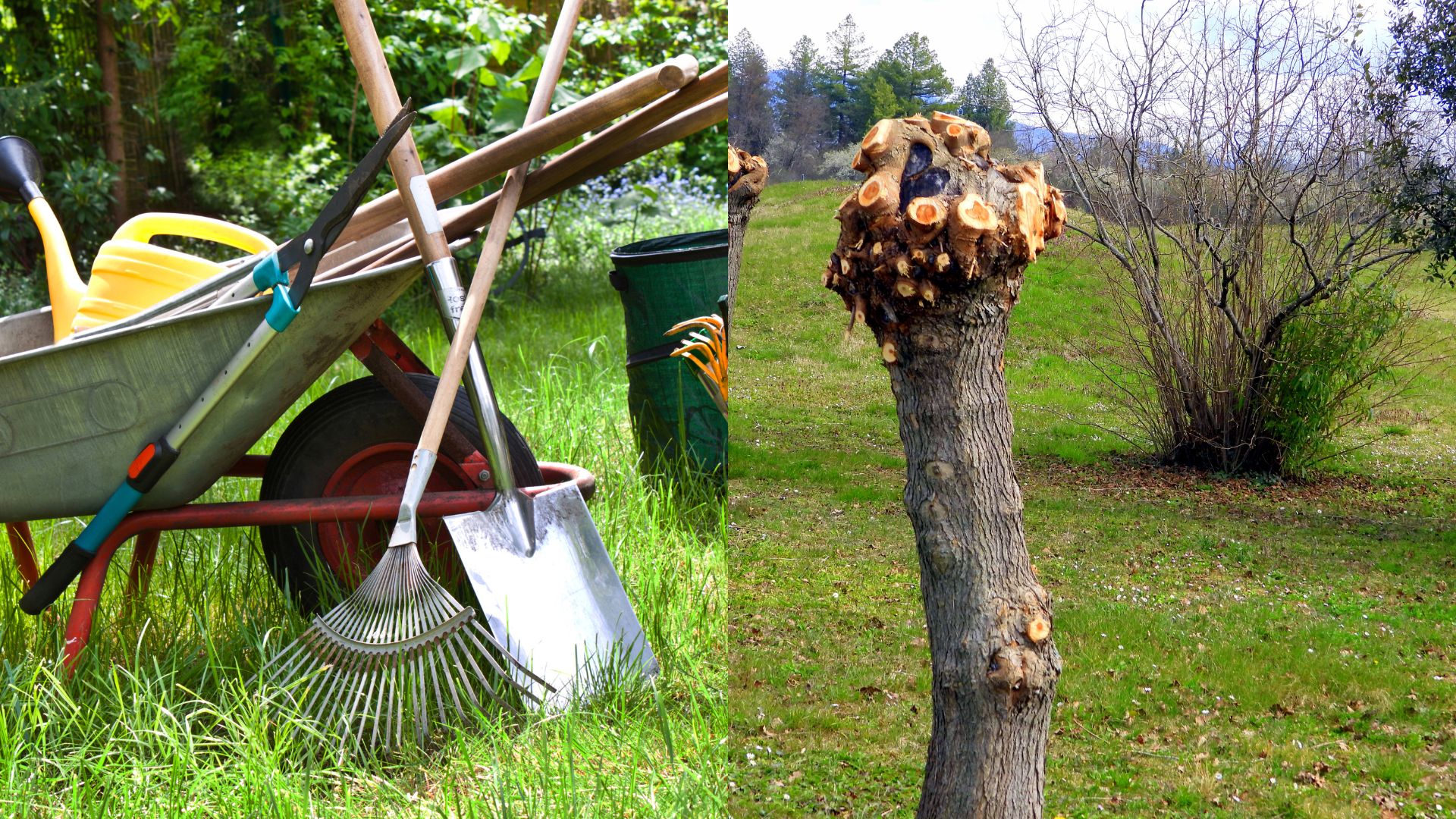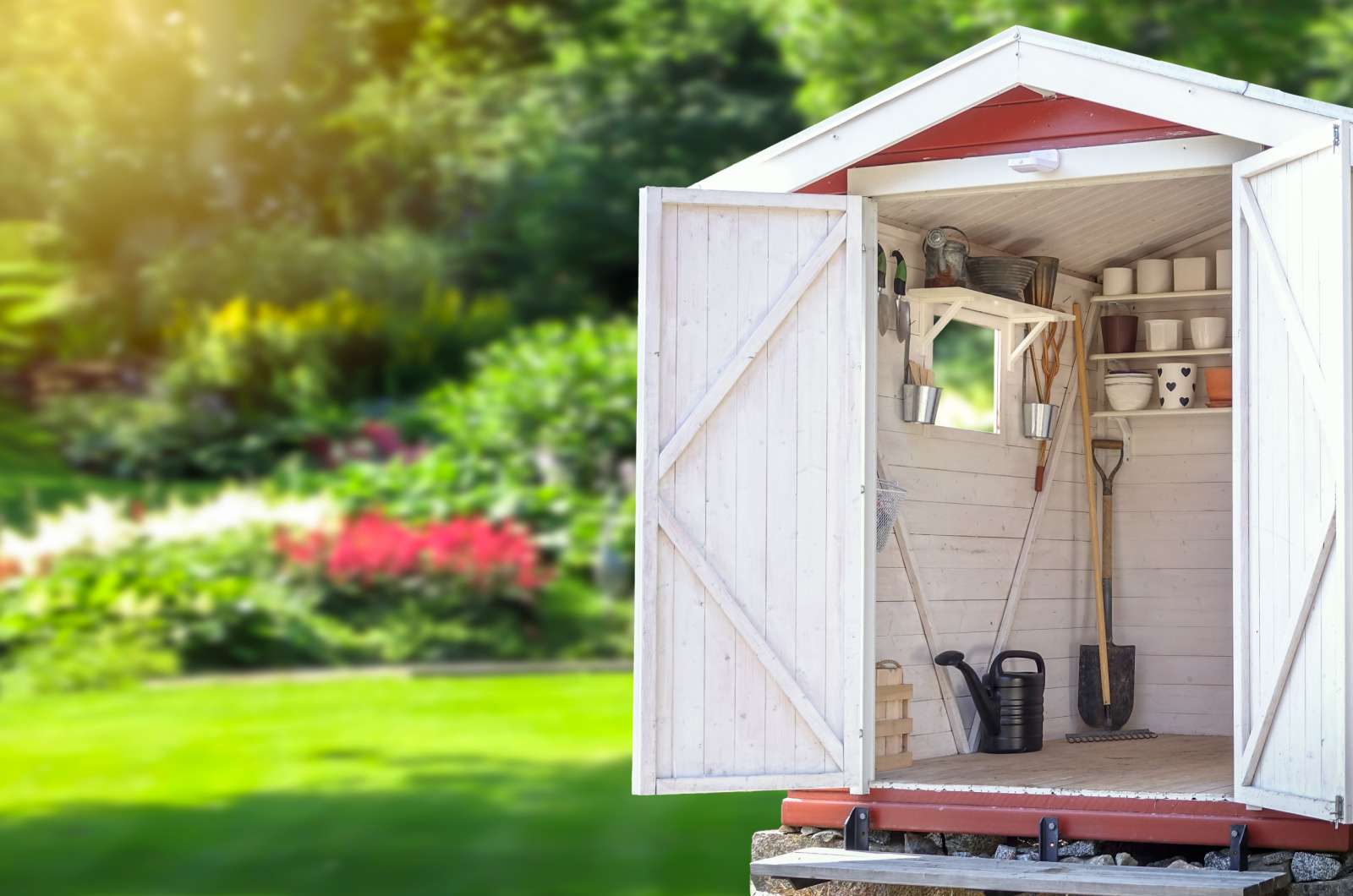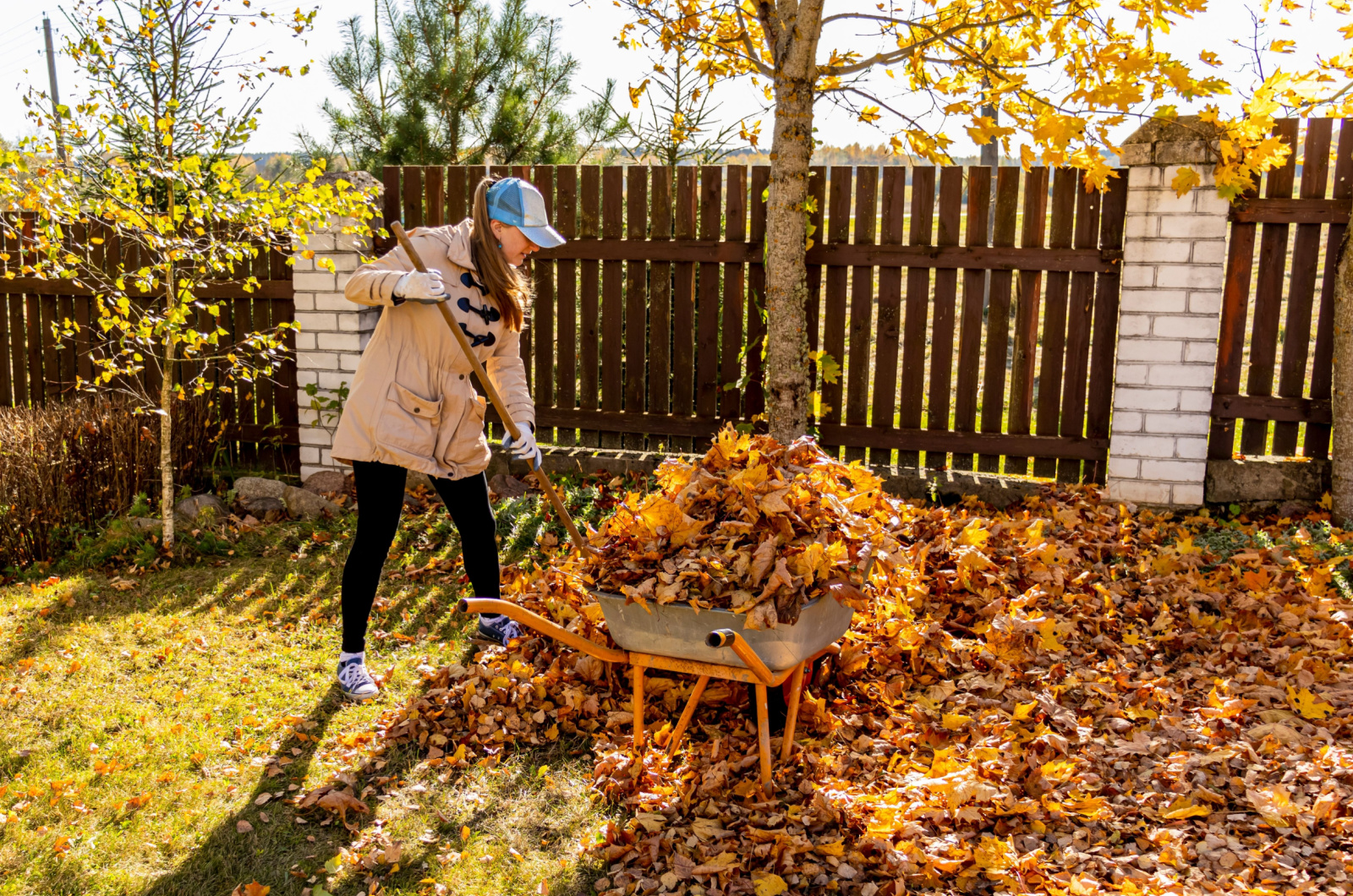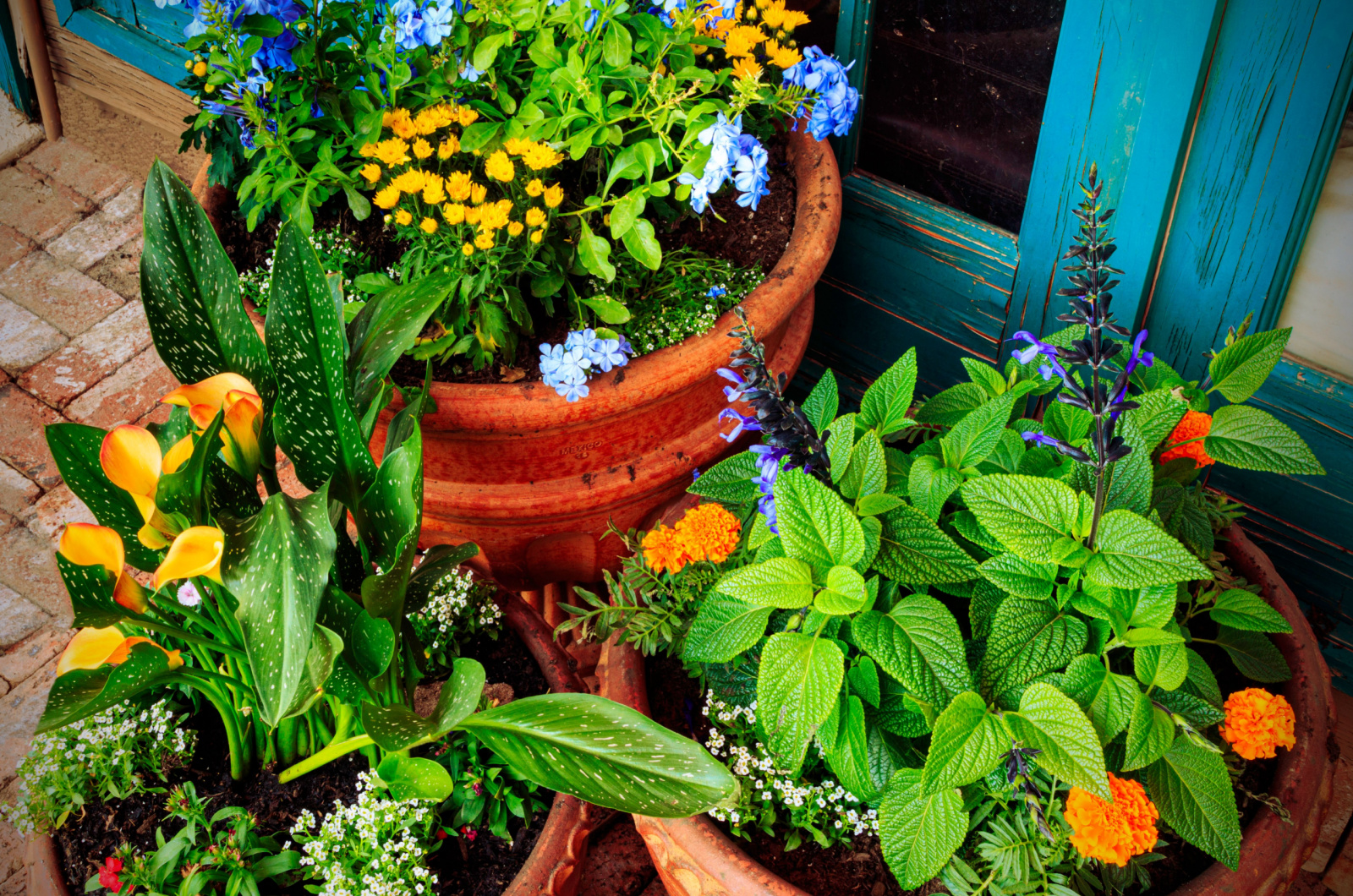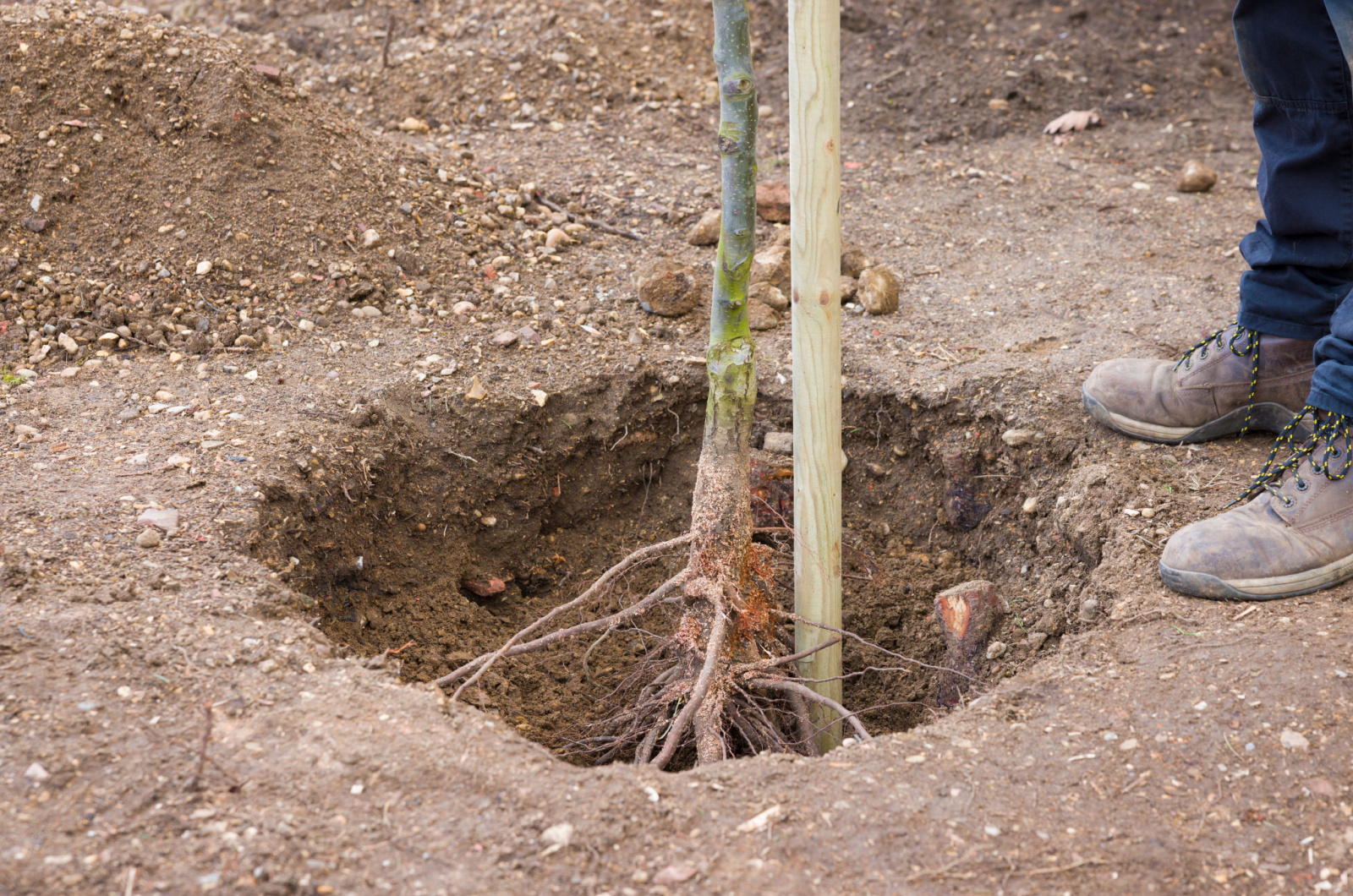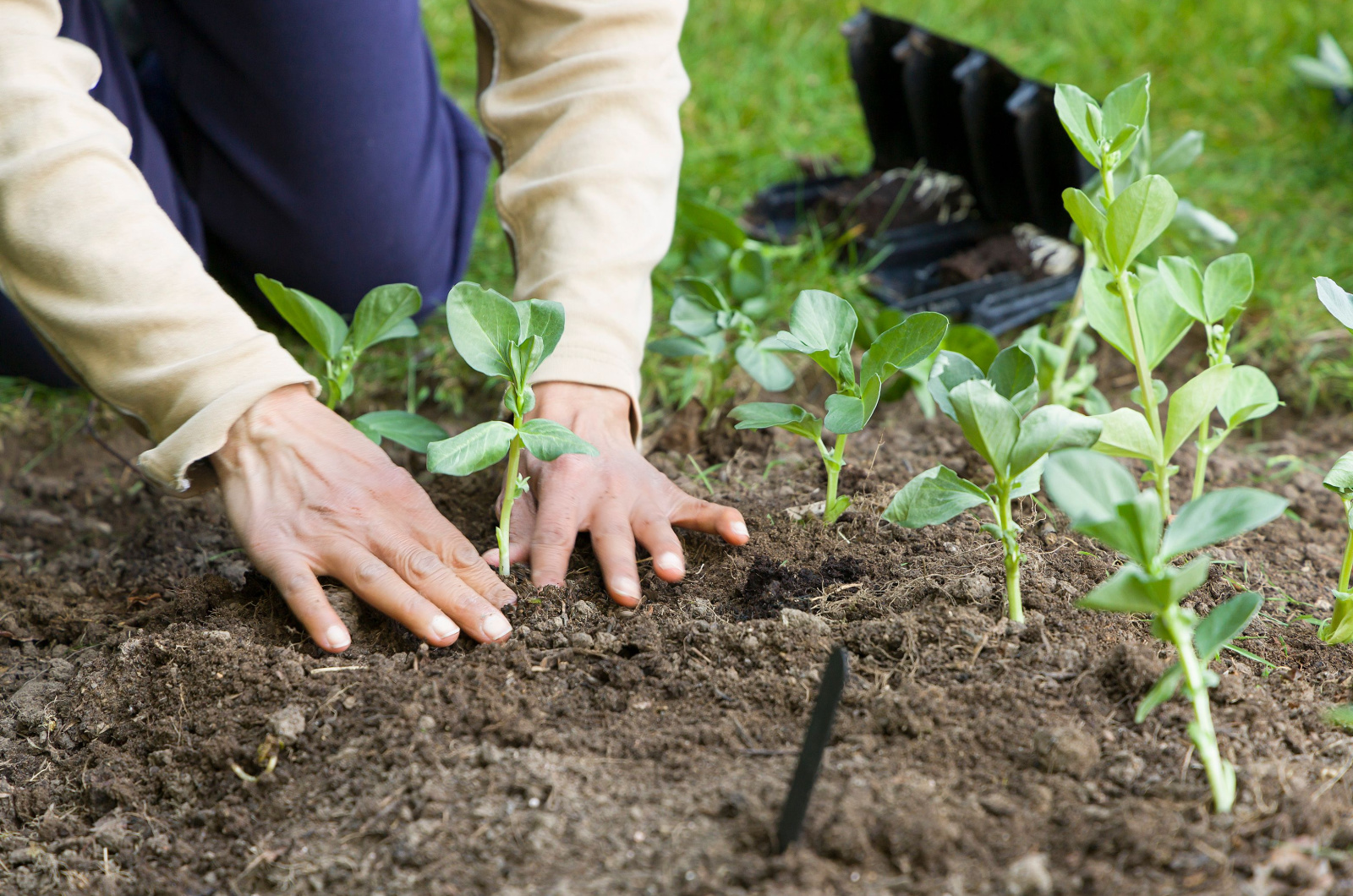For gardeners, cool weather is a signal that it’s time to complete a list of garden tasks for this year. Certain plants, soil, flower and veggie beds, garden tools, and supplies will all need to be protected during the winter months.
In this article, I’ll show you some time-sensitive garden tasks you should complete before winter. This will help your garden thrive the following season and reduce the number of chores in spring.
Let’s get started!
1. Store Your Garden Tools
There are various tools and supplies we use during the season. Constant use of hand tools makes them blunt and dirty, so we should sharpen, clean, and store them properly.
I recommend applying a sanitizing solution to your tools to get rid of potential pathogens.
Lawn mowers and similar machinery used for lawn maintenance should also be cleaned and inspected. Try them one last time this season to make sure they work properly. Then, empty the fuel tank and store your machinery.
Winterize your sprinkler systems, store garden hoses, and make sure there aren’t any leaves and other debris in the gutters.
If there are any taps and pipes in your garden that will be exposed to cool temperatures, insulate them to protect them from freezing and bursting.
2. Keep Your Garden Leaf-free
Our gardens are filled with leaves during the fall and that’s simply how it should be. However, we should rake them regularly not only to keep our garden tidy but also to prevent pest infestation.
Additionally, leaves prevent sunlight from reaching our lawns and some browning can occur as a result. Don’t forget to clean your paths and patios because fallen leaves can make them slippery and the last thing we want is to hurt ourselves.
If you have a compost pile, you can add all the fallen leaves to it. Alternatively, install a wired pen and pile up your leaves there.
They typically take a year to decompose entirely, and you’ll get a leaf mulch you can apply to your soil to boost nutrient levels.
3. Work Around Beds And Borders
Once the leaves fall from the plants and trees, our gardens will be completely exposed. This gives us an opportunity to spot and fix any damaged areas.
This is also an excellent time to enrich the garden with various structures, such as fences and trellises.
Plant structures below the soil line can’t be damaged at this point, so you can work around beds and borders without worrying about hurting your green buddies.
4. Store The Pots
Container gardening has multiple benefits but pots can be pretty pricey and we don’t want them to break or get damaged. Freezing temperatures can affect your containers significantly, so it’s important to protect them.
The first thing you should do is raise your containers up on clay feet to protect them from ground frost. Another benefit of this task is that it will allow excess water to drain completely.
It’s also advisable to sanitize your pots to make sure there aren’t any pathogens.
Another way to protect your pots is to place them in a sunny spot in your garden and then insulate them with fleece or bubble wrap.
5. Protect Cannas And Dahlias
Some plants, such as dahlias and cannas, can’t survive through winter months if left in containers outdoors. It would be best to transfer the plants along with their containers to a shed or a greenhouse.
If you have these plants in the ground, it’s advisable to remove them from the ground. Once they’re out, clean them of leaves and put them in compost for overwintering.
You can prevent your dahlias from sprouting earlier or rotting by turning the tubers upside down and leaving them for a couple of days to drain well.
To be on the safe side, you should wrap the plants in fleece and inspect them regularly for rotting or other issues.
6. Prune Your Deciduous Trees
Deciduous trees, i.e. the trees that drop foliage in the fall, are dormant during the winter, so it’s a perfect time to prune them.
The reasons for pruning trees during dormancy are that you can easily see all the branches, the tree will be less susceptible to diseases, and it will have enough time to recover until the growing season.
The essential step when pruning plants in November or during the dormant season is to cut off all the dead, damaged, or diseased branches.
Here’s a video on everything you need to know about pruning deciduous trees:
7. Plant Bare-root Plants
If you visit nursery stores right now, you’ll notice they’re selling many bare-root plants. Some examples are a few rose varieties, shrubs, and bare-root fruit trees.
Don’t wait too long to plant these species after you buy them. The first step is to immerse the roots in a bucket of water and leave them to soak for approximately half an hour.
Prepare the planting site by digging over it and make sure to clean any weeds and debris. You can add organic matter to increase nutrient levels in the soil.
If you have heavy clay soil, I highly recommend amending it with fast-draining materials, such as perlite or bark.
Take your plant and inspect the roots, looking for a soil mark on the stem. This actually tells us about the depth we should ensure when planting.
If you purchased grafted plants, you should make sure the grafted section stays above the soil line after planting.
Give your plant a good soak and tie it to a support until it’s fully established. Protect the roots from weather damage by applying a layer of mulch on the soil.
8. Turn The Soil
If you have flower or vegetable beds that will be empty during the colder months, the best option is to turn them.
The two main goals of this task are to make the soil less compact and expose pests that are hiding deeper in the soil.
After you turn all the soil, you should put down a layer of well-rotted manure or compost to add more nutrients. This is a common way to improve garden soil and prepare it for the following season because these materials will break down during the winter.
Once the spring arrives, you can work compost into your garden soil in order to improve its structure.
9. Plant Broad Beans
Nothing tastes better than broad beans picked early in the season. But to get them at that time, you should sow the seeds before winter.
The first step is to choose the variety, and the most important factor here is your personal preference.
Then, add a fair amount of organic matter to the soil to get a fine tilth. Make double rows, ensuring there is about 6 inches between each. Sow the seeds approximately 2 inches deep and leave 9 inches between them.
Irrigate the planting site, label it, and add a cloche or horticultural fleece over it. This will keep the seeds protected during the colder months. Additionally, hungry birds and other animals won’t be able to reach the seeds.
Some growers start their broad beans in pots and keep them in a cold frame or greenhouse during the winter months.
10. Keep Your Bird Feeders Clean
The last task on our list is related to bird feeders and their maintenance. You should keep them clean and refill them whenever necessary.
You can also install hanging fat ball feeders to ensure a constant food supply for these precious animals. Additionally, make sure there is water in your garden throughout the winter so that the birds are never thirsty.
If you have a pond or other water features, make sure to protect them from freezing. Remember that installing water sources is an excellent way to turn your garden into a wildlife habitat.
That’s it! By completing all the tasks from this list, you’ll keep your garden protected during the colder months and reduce the number of chores when the next season starts!

